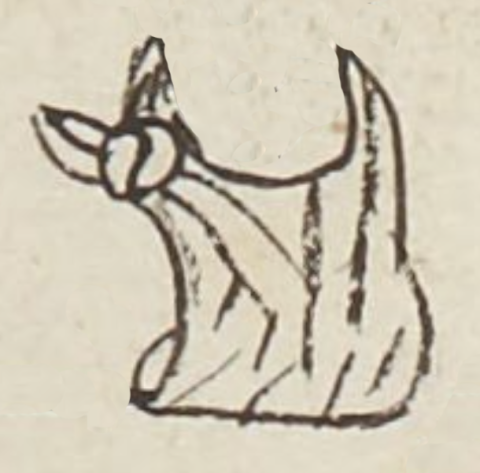tilmatli (MH487r)
This element for a cape or cloak (tilmatli) has been carved from the compound glyph for the personal name Xochitilma. It is somewhat square in shape with a knot in the upper left corner. If this cape (a man's garment) were worn, the knot would be on the man's shoulder. The fabric has texturing and a curl at the bottom that give it three-dimensionality.
Stephanie Wood
The tilmatli looks similar to the ayatl in glyphs from the Matrícula de Huexotzinco. Tilmas, as they were called in Spanish, came in different designs, colors, and fabrics. One is this collection involve flowers, one is black, one is made of zacate (hay or bulrushes).
Stephanie Wood
1560
Stephanie Wood
capes, blankets, tilmas, capas, mantas

tilma(tli), a cloak, https://nahuatl.wired-humanities.org/content/tilmatli
la manta, o la tilma
Stephanie Wood
Matrícula de Huexotzinco, folio 487r, World Digital Library, https://www.loc.gov/resource/gdcwdl.wdl_15282/?sp=53&st=image.
This manuscript is hosted by the Library of Congress and the World Digital Library; used here with the Creative Commons, “Attribution-NonCommercial-ShareAlike 3.0 License” (CC-BY-NC-SAq 3.0).






